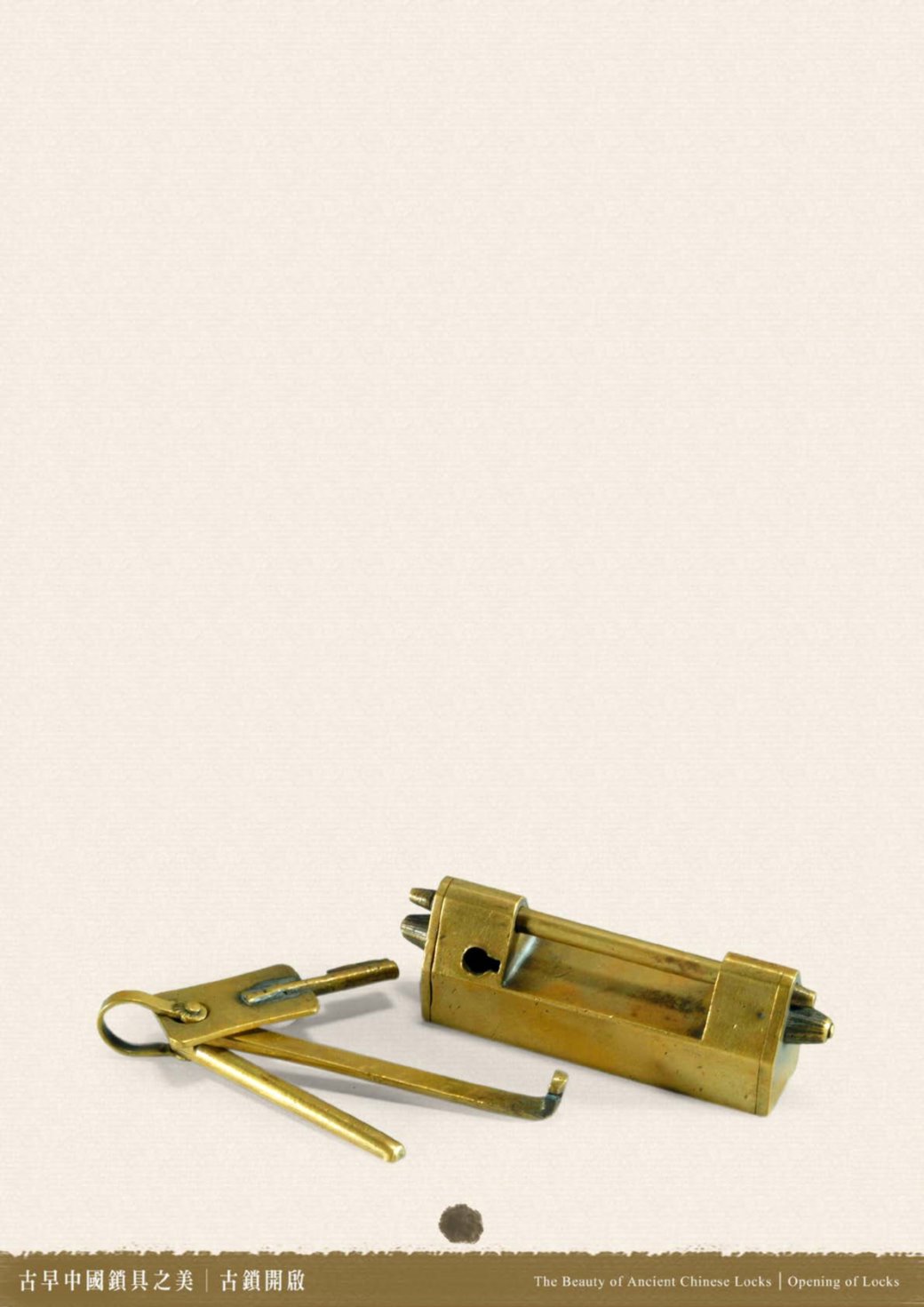

80
當鑰匙插入鎖體處於開鎖
位置之後,接下來的動作為直
推或旋轉鑰匙,此時鑰匙頭會
將張開的彈簧片擠壓鉗制,使
鎖栓與鎖體分離以開鎖。再者,
對於鑰匙插入鑰匙孔後要旋轉
方能開啟的鎖具,稱為「轉沖
鎖」。
有些古鎖的栓梗上裝有
長、短兩種彈簧片,需要兩把
不同的鑰匙來開鎖。上鎖時,
長簧片弓卡在鎖體壁内
,開鎖時,
必須先用一把鑰匙擠壓鉗制長
簧片,使鎖栓移動,直到短簧
片卡在鎖體壁内
,接著用另一把
鑰匙擠壓鉗制短簧片,使鎖栓
整個通過鎖體壁内
的卡口而開鎖;
這類鎖具稱為「二開鎖」或「雙
開鎖」。
Once the key is inserted into
the lock in the right position, the
last step for opening the lock is to
push or rotate the key for the key-
head to squeeze the splitting springs
to separate the sliding bolt from the
lock-body. Some locks are named
"rotate-open locks" if they are finally
open by rotating the keys.
Some multiple-stage-open
locks are sometimes called "double-
open locks". They have long and
short splitting springs attached to
the stem of the sliding bolt, and
they take two different keys to be
unlocked. When it is locked, the
lock is trapped by the longer springs.
When people try to open the lock,
one key has to be inserted first to
squeeze the long springs to shift the
sliding bolt until the lock is trapped
by the shorter springs. Another key
is then used to squeeze the short
springs to enable the sliding bolt to
be entirely released.
‧二開鎖
Double-open lock
67x27x18mm 91g


















